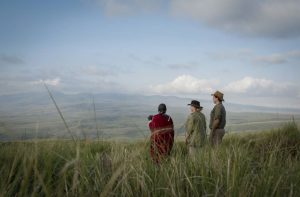
Tanzania’s Safari Seasons: When and Where to Experience the Best Wildlife Encounters
Planning a safari in Tanzania is an exciting endeavor, but one key factor that can greatly influence your experience is the timing of your visit. Tanzania boasts a rich tapestry of wildlife, and the seasons play a significant role in determining where and when you should go to witness the most spectacular wildlife encounters. In this article, we’ll delve into Tanzania’s safari seasons and guide you on the best times to explore this magnificent country’s wilderness.
The Great Migration: A Moving Spectacle
The Great Migration is undoubtedly one of the most iconic wildlife events in the world. It involves millions of wildebeests, zebras, and gazelles traversing the Serengeti in search of fresh grazing land and water. This awe-inspiring spectacle typically occurs from late November to July, with the exact timing varying from year to year.
December to March: The wildebeests give birth to their calves during this period in the southern Serengeti, attracting predators like lions and cheetahs. This is a prime time for witnessing thrilling predator-prey interactions.
June to July: As the dry season approaches, the herds begin their journey north, crossing the Grumeti River and facing formidable crocodile-infested waters.
Dry Season (June to October): Peak Safari Season
The dry season in Tanzania, from June to October, is considered the peak safari season. During these months, the weather is relatively dry, making wildlife easier to spot as animals congregate around water sources.
Serengeti and Ngorongoro: This is the ideal time to explore the Serengeti and Ngorongoro Conservation Area. The vegetation is sparse, and the Big Five are easily visible. The wildebeest migration reaches the northern Serengeti during this period.
Tarangire National Park: Tarangire is at its best during the dry season when large herds of elephants, giraffes, and antelopes gather around the Tarangire River.
Wet Season (November to May): Green and Lush
Tanzania’s wet season, also known as the green season, brings lush landscapes and baby animals. While some may avoid this time due to occasional heavy rains, it offers unique experiences.
Bird Watching: Lake Manyara and Tarangire come alive with migratory birds, making it a paradise for bird enthusiasts.
Calving Season: The southern Serengeti sees an abundance of newborn animals, making it an excellent time for witnessing the circle of life in action.
Lower Prices: The wet season often comes with lower accommodation prices and fewer tourists, allowing for a more intimate safari experience.
Off the Beaten Path: Selous and Ruaha
If you prefer a quieter safari experience away from the crowds, consider exploring the southern parks of Selous Game Reserve and Ruaha National Park. These regions offer excellent wildlife viewing throughout the year, with fewer visitors.
Ending Up
Tanzania’s safari seasons each offer a unique perspective on the country’s rich wildlife and landscapes. Whether you aim to witness the Great Migration’s dramatic river crossings, prefer the lush greenery of the wet season, or seek a quieter adventure in less-visited parks, Tanzania has something to offer year-round. Plan your safari according to your preferences and prepare for an unforgettable journey into the heart of Africa’s wilderness.



